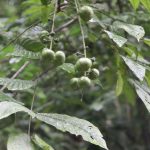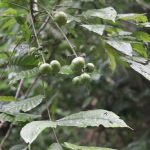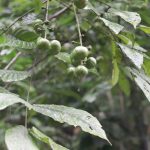Sphaerosacme decandra (Wall.) Pennington, Numer. List 1276 1829 (syn: Aglaia decandra Roxb.; Aglaia decandra Roxb. ex Wall.; Amoora decandra (Roxb. ex Wall.) Hiern; Aphanamixis decandra (Roxb.) Kosterm.; Lansium decandrum (Roxb.) Briquet; Sphaerosacme decandra Roxb. ex Wall.; Sphaerosacme fragrans Wall. ex Voigt; Sphaerosacme nepalensis Roem.);
.
Nepal to N. Myanmar: East Himalaya, Myanmar, Nepal as per POWO;
.




Meliaceae member like Dysoxylum: 4 images.
Meliaceae member like Dysoxylum. Kindly help in identification.
What do you say about Aphanamixis polystachya (Wall.) R.Parker?
No, Sir, I wouldn’t go for Amoora rohituka = Aphanamixis polystachya (Wallich) R. Parker,, because it has 3-loculicidal capsule.
Only, Amoora decandra features – “fruit gloose-obovoid 5 furrowed umbilicate 5-celled and seeded.” (FBI. vol-I, p-562)
Flowers are polygamous (Having separate male, female and bisexual flowers on the same plant).
.
References: POWO Catalogue of Life The Plant List Ver.1.1 IPNI GBIF– specimen (High resolution specimens) Annotated checklist of Flowering plants of Nepal India Biodiversity Portal
